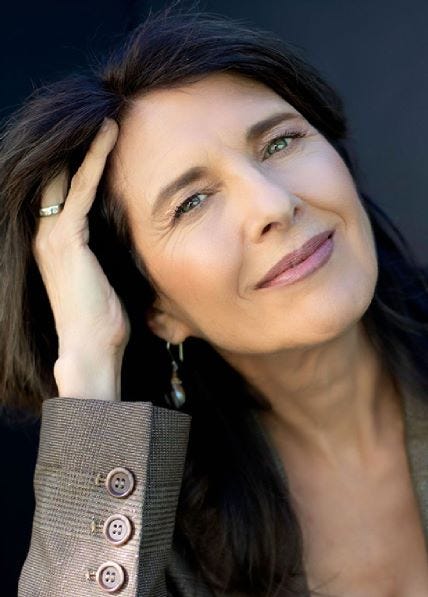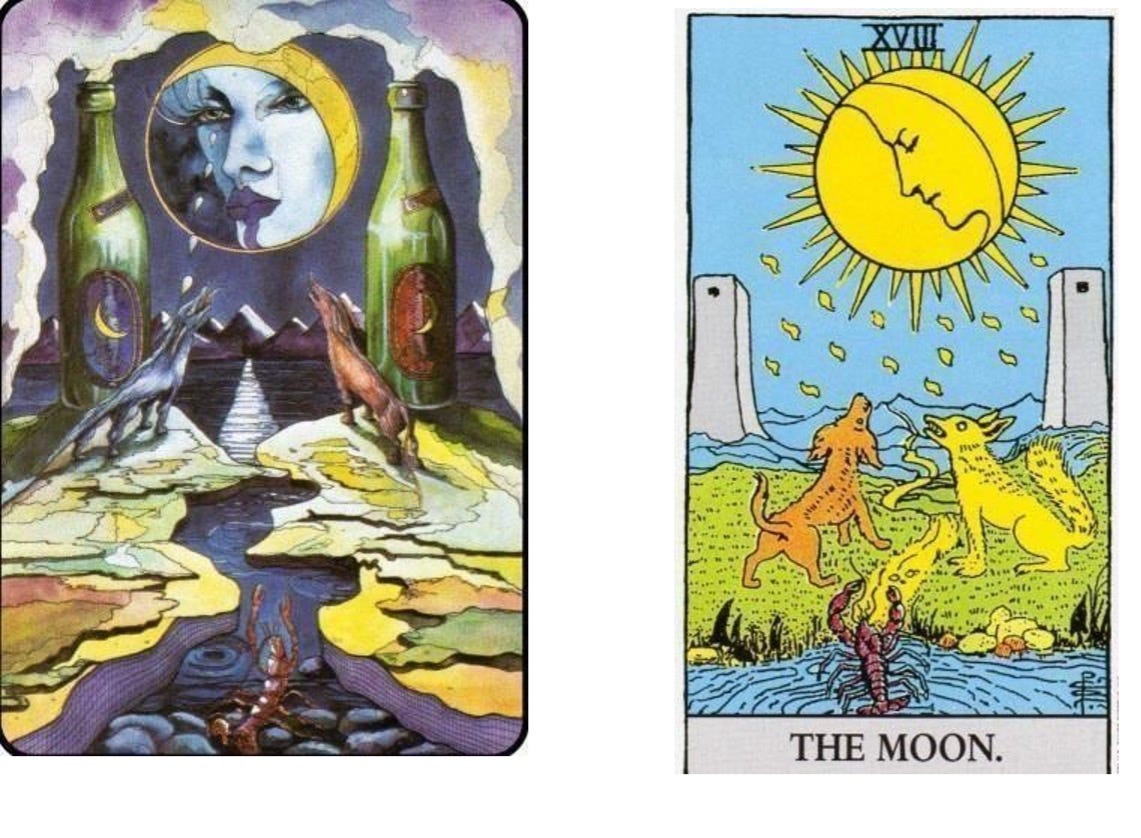Integrating Tarot and Psychotherapy
Part I: The first in a four-part series with guest contributor Lauren Schneider, introducing Tarotpy®—a soulful synthesis of depth psychotherapy and archetypal imagery.
"Because our psychic stuff is images, image-making is a via regia, a royal road to soul-making." ~James Hillman
In 1983, I entered a master’s program for marriage and family therapy with a tarot deck tucked into one pocket, a book of the I Ching in the other. I did not study the tarot tradition or symbolism. Instead, I begin to experiment with applying psychotherapy – including family systems, hypnotherapy, ecotherapy, and dreamwork – to playing with the cards. This work, which I came to call Tarotpy® (tarot therapy), evolved over nearly four decades as a highly effective and awe-inspiring method of depth psychotherapy.
Initially, I kept tarot therapy sessions separate from my regular psychotherapy practice for fear that my license might be burned at the stake, metaphorically speaking. In the beginning, I experimented only with friends, colleagues, and clients who came by word of mouth. For years, I got rolled eyes from colleagues whenever I mentioned using tarot cards as a therapeutic tool. Spiritual psychotherapy was not yet recognized in the field. There were periods of uncertainty when I thought it might be easier to put aside this weird pursuit. Yet, I could not put down the cards because time and time again, the tarot therapy would reveal in one or a few sessions what might take months, even years to uncover in traditional therapy. Profound insights, creative solutions, and significant shifts arose spontaneously from reflection on the images.
Using Tarot Therapy in Clinical Practice
Tarot therapy is not fortune-telling. Unlike traditional tarot readings, in which there are preset formats and definitions, I begin by asking the client to focus inwardly and ask “how many cards do I need to look at.” I pay careful attention to verbal and non-verbal cues as the client describes how the cards are laid out in his/her mind’s eye and the meaning of each placement. The client is invited to select a deck or multiple decks from a collection that includes tarot, dream cards, oracle cards, and other imagery decks. By choosing the deck, the client has more emotional resonance with the images. In this way, tarot therapy lays the client’s unconscious on the table, so that whatever has been hidden—emotional blocks, psychological and relational dynamics, core beliefs, inner conflict, and inner resources—is made conscious.
On the one hand, tarot therapy is a highly effective projective tool. We see images the way we see the world, as a mirror of what we believe about ourselves. Whatever card is selected, we will project onto it our unconscious beliefs; and in reflecting upon the image, we can discover unconscious motivations and creative solutions.
On the other hand, there seems to be an invisible mastermind at play whenever someone selects so-called random images with uncanny correspondence to their concerns. I have learned through tarot therapy to trust the wisdom that comes with a random image. One must always pay attention to the moments of surprise whether in dreams or waking life, because this is how the muse of inspiration announces itself. Randomness, or what we think of as accidents or mistakes, is an opportunity for the creative unconscious to add its two cents to the conversation.
Mary was in her early sixties and heavyset as if her body were weighted down by a burdensome life. Private worries were guarded behind a forced smile. Though she indicated having anxiety about her sons, she would not divulge further information. In fact, opening up any conversation with Mary was difficult.
I explained that I use symbolic imagery in conjunction with therapy to access unconscious resources, clarify issues and discover creative solutions. To begin the process, I asked Mary to choose a tarot deck from among a large display of decks. She chose the Karma Tarot deck and randomly picked a card face down to represent her problem.
Mary turned over the card to reveal the Moon. Below left, I have shown the Moon card from the Karma deck. On the right, I have included the Moon card from the Rider-Waite deck for contrast. The Rider-Waite deck is arguably the most well-known Tarot deck; the illustrations and symbology are common to most decks around the world. Coming from a scientific orientation, I like to use the Rider-Waite Tarot as a control deck to show how imagery varies with each deck and, thus, how accurately the chosen deck and card resonate with the individual’s specific issue.
You might notice, for instance, in the Rider-Waite Moon card, a lobster crawls up from the depths of the water, and a pathway leads between a domesticated dog and a wild wolf. In most decks, as with this one, the path continues between two towers, houses, castles, or structures of some sort.
The Moon card is generally associated with visions, dreams and reflection. I associate the Moon card to the process of psychotherapy itself: by way of reflection (lunar consciousness), we bring up something primitive from the deep waters of our unconscious; we explore both the wild and domesticated sides of this instinctual energy; and this journey into consciousness finally makes its way into the external structure of our lives.
However, as I looked at the Moon card from the Karma deck, what grabbed my attention was that instead of towers, castles, or structures, there stood two wine bottles. Though I had used the deck numerous times, I had never noticed this before, nor had I ever seen wine bottles in any other Moon card. I trust that whenever a detail grabs my attention, it is significant. I then address it in the form of a question in order to encourage further dialogue, or I gently offer an interpretation to evoke associations and insights from the client.
I reflected to Mary, “I notice these two wine bottles. Is there a drinking problem in the family?”
Mary then revealed what was really upsetting her: both sons were alcoholics, and her husband had died of alcoholism. In just one Tarot therapy session, Mary squarely faced the problem that she had been trying to hide for years.
***
Breakthrough experiences with clients inspired me to jump over my own shadow of uncertainty and integrate Tarotpy as a fundamental part of my clinical practice. I never ceased to be amazed at how Tarotpy accelerates therapy – insights, creative solutions, and profound shifts happen spontaneously.
Times have changed since I began this work in 1983. Recent newspaper and magazine articles have all cited a trend, especially among the younger generation to seek spiritual perspectives — even going as far as asking their therapists to incorporate divination tools like tarot into their sessions. Tarot therapy illustrates that psychotherapy is often guided by unseen forces, by tapping into the creative unconscious or a collective intelligence that participates in our healing and evolution. Psychotherapy is after all, by definition, the science and art of healing the Soul.
Integrating Tarot and Psychotherapy: A Soulful Practice for Healing and Transformation
Saturday, May 17th, 2025
10 AM to 3 PM PST
Online via Zoom
Join us for an experiential presentation of Tarotpy, a groundbreaking method of Tarot therapy developed in 1983 that integrates Depth Psychotherapy with the evocative power of image, imagination, and synchronicity. Drawing from family systems, archetypal psychology, hypnotherapy, and dreamwork, Tarotpy is both a highly effective clinical tool and a contemplative practice for reconnecting with Soul.
In honoring its ancestral roots, we integrate the work of James Hillman, Joseph Campbell, Marion Woodman, and other luminaries of Depth Psychology as we explore how reconnecting with Soul and “aliveness” is the purpose of psychotherapy and our life journey.
Psychotherapy is, by definition, the healing of Soul. Yet too often, Soul is neglected in both educational and therapeutic settings. The integration of Tarot and psychotherapy (Tarotpy) restores that connection by speaking the language of the unconscious and of Soul—the language of images.
Importantly, Tarotpy is not fortune-telling, nor is it about memorizing the symbolic meanings of tarot cards. By inviting clients to choose from a rich variety of decks, including tarot, oracle cards, SoulCards, and dream cards, they encounter a “living image” that feels uncannily precise and personally meaningful. Through this encounter with image and intuition, the unconscious stirs, the imagination awakens, and insights and creative solutions emerge spontaneously. Tarotpy functions both as a powerful projective tool and as a mysterious bridge between psyche and matter. It appears that there is an invisible mastermind in the “random” selection of images.
Synchronicity—those extraordinary moments when an image perfectly mirrors the client’s inner world – is a “glitch in the matrix,” dissolving the illusion of separation between self and world, dreaming and waking, ordinary life and the enchantment of Soul. Synchronicity evokes awe, a deep sense of wholeness and interconnectedness.
Tarotpy reveals the heart of the issue and promotes profound transformation in a few sessions that would take months to years of traditional psychotherapy. The presentation will also address the issue of burnout among healthcare practitioners, especially with the epidemic of anxiety and depression, and show how Tarotpy can sustain and rejuvenate both therapists and clients.
This workshop is presented in two parts: the morning will introduce the wisdom and healing power of Tarotpy and the magic of synchronicity. Participants will learn the foundations of the method and are encouraged to bring a deck to select cards in response to a personal question or concern. Breakout sessions will offer opportunities to reflect meaningfully on the images using simple yet powerful techniques borrowed from dreamwork practices.
In the afternoon, clinical cases will illustrate how Tarotpy supports clients—and therapists—through loss, upheaval, and transformation, both personal and collective. We’ll also explore how Tarotpy, like dreams, awakens the ecological unconscious—our inherent connection to the natural world. This is Imaginal Ecotherapy. Tarotpy initiates both client and therapist into an imaginal realm where the world is no longer seen as inert matter but animated by Soul. This alchemical process cooks us all—therapist and client alike—rekindling inspiration and reinvigorating therapy with a sense of enchantment.
Register at EventBrite


Laurie Zemelman Schneider, MFT (dba Lauren Z.) is a spiritual psychotherapist, lecturer, trainer, and author. A board-certified continuing education provider, and Certified in Advanced DreamTending and Certified Embodied Imagination Practitioner, Lauren offers workshops, trainings, and ongoing groups for both healthcare professionals and laypeople around the world.
She is the creator of Tarotpy®, an integrative approach to psychotherapy that blends tarot, image, and depth psychology. Her award-winning book, Tarotpy® – It’s All in the Cards: A Pathway to Inner Wisdom, Divine Guidance, and Profound Healing, has received three Gold Medals from the Living Now and Next Generation Indie Book Awards, as well as a Silver Medal from the Nautilus Book Awards.
To learn more, visit dreamsandtarotpy.com or contact Lauren directly at laurenz@dreamsandtarotpy.com.







